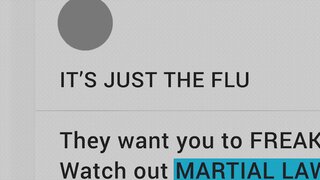Create a free profile to get unlimited access to exclusive videos, breaking news, sweepstakes, and more!
‘You Can Be Here Today, And Be Gone Tomorrow:’ How Social Media Has Changed Hip-Hop Feuds
How rappers are using social media to settle the score.

Beef is nothing new in hip-hop, but it’s being served differently. The genre has been about competition since its inception, with rappers constantly vying to one-up each other’s music, success or credibility. It’s all part of building—and defending—a reputation.
Roxanne Shanté sparked 55 diss records with the so-called “Roxanne Wars” in the ‘80s. The ‘90s was consumed by the East Coast vs. West Coast battle between the Notorious B.I.G. and Tupac Shakur. After both rappers were gunned down came long-running beefs between Jay-Z and Nas as well as 50 Cent and Ja Rule that extended through much of the aughts.
This past year has been inundated with rivalries that are reminiscent of earlier eras, including Cardi B versus Nicki Minaj, Drake versus Pusha T, and J. Cole versus Lil Pump. But with social media growing increasingly integral for artists and fans alike, the nature of feuds is rapidly changing.
Witness rapper and Instagram star Daniel Hernandez, aka Tekashi69, aka 6ix9ine.
A bad boy of hip-hop and a subject of Oxygen.com’s “Dark Web Exposed,” 6ix9ine used aggressive tactics on social media, including sparking more than a dozen beefs, to fuel his rise to stardom. Yet the rapper, who pleaded guilty to racketeering conspiracy and other charges earlier this year, realized his social media behavior was potentially dangerous.
"You can be here today, and be gone tomorrow," said 6ix9ine, after his peer XXXTentacion, who used social media in a similar fashion, was shot to death last year.
Response Time
A diss doesn’t mean anything unless it incites a response. Historically, rappers were given as much time as needed to craft a response in a battle. Usually that meant putting together a song, which could take weeks or longer.
Jay and Nas’ beef, for instance, heated up when the former released his “Takeover” in September 2001. Nas’s response, “Ether,” which arguably won him the battle, wasn’t released for approximately three months. Yet fans remained transfixed on the two emcees and their beef during the interim.
Now, the response time has shortened considerably. Let’s be honest: How many people have the attention span to wait days—let alone months—for celebrity drama? Adept artists use our fleeting attention to their advantage. Pusha T dropped “Infrared” against Drake in May 2018 and the Toronto rapper followed up with “Duppy Freestyle” – in less than a day. Timing is everything. Drake successfully diverted attention off Pusha T, until the next round of beef.
Diss Records
With hip-hop’s history in battle culture, the best rappers used to show off their lyrical mettle in diss records. Nas’ “Ether,” Ice Cube’s “No Vaseline,” Tupac’s “Hit ‘Em Up” and Common’s “The Bitch in Yoo” are just a handful of songs that have become part of the annals of hip-hop beef.
Some rappers still rely on diss records to make a statement, especially those that pride themselves as lyricists. Pusha T’s “The Story of Adidon” was a brutal attack on rival Drake and showcased his skill. Drake never released a true response.
Instead, he let veteran executive J Prince defend him and later aired his grievances to LeBron James on the HBO series “The Shop.” It’s clear from social media that there was a generational divide among perceptions of how Drake handled the situation. While older fans saw Drake waving the white flag in defeat, many younger fans saw nothing wrong with the rapper flexing his celebrity to tap out of the battle.
What would have been a permanent career blemish in the past had zero repercussions for Drake. Despite conceding to Pusha T, he didn’t miss a beat. He enjoyed a string of hit records like “In My Feelings” and “God’s Plan” and was deemed the top artist of 2018.
Make It IG Official
Social media has not only changed the speed of beef but the nature of it. Artists use social media, and especially Instagram, to speak directly to their fans and to each other. As such, social media is crucial in terms of how beef is escalated and discovered.
Back in the day, a rapper would go to an established radio station like Hot 97 or to a respected media outlet like XXL or The Source to give an interview about their target. Who can forget Tupac’s infamous 1995 Vibe interview from prison or Biggie’s final words with Sway before he was murdered?
Now, artists are largely bypassing traditional media and going straight to social.
Fans watched in real-time as the aforementioned 6ix9ine and Trippie Redd had a fight on Instagram Live. In the clip, 6ix9ine is in a pool while Trippie appears to be shopping in a very spontaneous exchange. In November, 6ix9ine posted a cozy photo with Trippie's ex-girl, showcasing the petty for all of Instagram to see.
Social media has not only changed the speed of beef but the nature of it. Artists use Instagram especially, to speak directly to their fans (and to each other). As such, social media is crucial in how beef moves throughout the globe.
Rappers who aren’t necessarily active on social media, like J. Cole, are using the Internet to create their own platform. He squashed his beef with Lil Pump last year in a sit-down that was recorded and shared online.
The Hive
Social media also allows fans a front-row seat to watch, comment and respond in real time. There’s definitely a sense of power, in which fans are legitimately a part of the story.
A case in point is the fanbase of Nicki Minaj, known as “Barbz.” Minaj’s online army has often jumped in to defend (or harass, based on perception) anyone the rapper doesn’t like.
Last July, a freelancer named Wanna Thompson was harangued for critiquing Minaj. Others that have been victims to attacks by Barbz include singer/songwriter Tracy Chapman, who wouldn’t let Minaj sample her music, and longtime rival Cardi B.
Hip-hop beef used to be a spectator sport that fans watched. Now, they’re on the field.
Too Much Information?
Beef never sleeps with social media. In the genre’s earlier years, celebrities were positioned as separate and elevated from their fans. They had an aura of mystery. We didn’t know what Tupac did when he was angry. We never saw Biggie having a public meltdown. We got only glimpses—usually curated—of celebrity lives and thoughts.
With social media and smartphones recording everything 24/7, the velvet rope is gone. We see everything as it happens—raw and unedited. When Cardi B reportedly got into a fight with Minaj’s crew during New York Fashion Week, we saw footage mere moments after the throw down—and the fight instantly trended on Twitter.
As a result, we’ve all become armchair voyeurs and quick to share hot takes. Every day brings new drama and we’re all waiting for that next click.






























